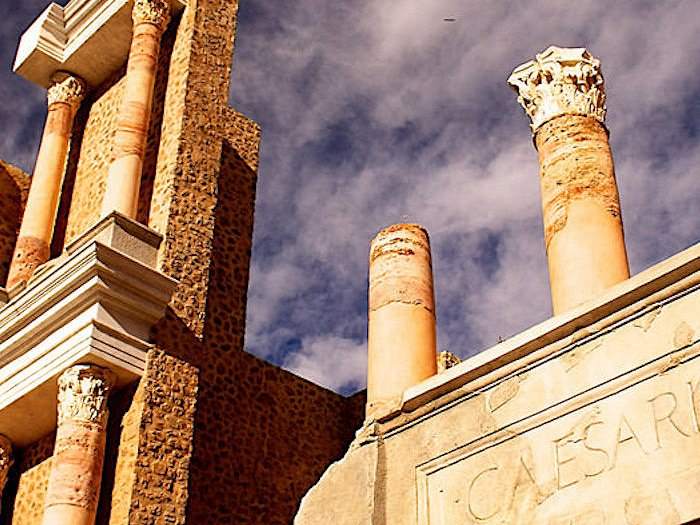
Here at our wonderful properties at La Manga Club, some obvious standout features include the climate, the landscape, the nightlife, and the culinary delights. But the area also has an extraordinary architectural heritage tied to its long history as a land abutting the Mediterranean and the world of Classical culture. If you own a property in our golf resort you must visit one of the jewels of the nearby city of Cartagena: its Roman amphitheater. Despite having been discovered only relatively recently, its excellent state of preservation, generous programme of activities and very interesting museum – designed by renowned international architect Rafael Moneo – have made it one of the Roman amphitheaters in Spain most worth a visit. And this cultural standout is located just a mere 30 kilometers from your villa or apartment at La Manga Club.
A piece of history
Cartagena was a populous city in Roman times called Cartago Nova. Its amphitheater, begun in 44 BC and completed in 1 BC, in the era of Emperor Augustus, is a good gauge of its importance in the empire: it could accommodate more than 6,000 spectators. It was dedicated to Lucius and Gaius Caesar, grandsons of the Emperor, as you can still read on the two lintels at the east and west entrances. Constructed with limestone, marble, sandstone, and red travertine marble, in the 3rd century, with the fall of the Empire, a market was built with its materials. Destroyed in the Vandal invasion in 425, in the 6th century they built a commercial area on the ruins, and this in turn disappeared under the newly built Santa María la Vieja cathedral.
This continuous occupation of the original space left layers of remains of successive cultures on top of the amphitheater, meaning that it remained undiscovered, but also well conserved. It wasn’t until 1988 that, thanks to construction on the Regional Craft Centre, archaeologist Sebastián Ramallo Asensio discovered the ruins and subsequently headed the entire restoration and recovery project. The amphitheater museum was inaugurated in 2008, and today it stands as a cultural complex that is well worth the visit.
Amphitheater and museum
During the process of restoring the amphitheater, it was decided that it would be a good idea to build a complimentary museum to display and detail the beautiful archeological discoveries made inside the edifice. So if you’re thinking of spending a day away from your property at La Manga Club to go to Cartagena and explore this incredible piece of history, the museum is an obligatory stopover as well. Moneo did an excellent job of integrating the museum and the amphitheater, and took full advantage of the colourful urban surroundings that include the ancient Santa María La Vieja church and the Riquelme Palace. It is through this latter building that visitors access the museum, from the central plaza of the Consistorial Palace. Divided over two buildings connected by a subterranean tunnel, the museum has one part housed in the Riquelme Palace that includes the auditorium, the cafeteria, the temporary exhibition hall and the corridor where the building’s history and the area’s inhabitants are detailed, from the Carthaginians to the Romans, Byzantines, Moors, and Christians. The second part of the museum includes the permanent exhibitions and the entrance to the amphitheater itself.
As if it wanted to encircle in its arms the city that stands before it, the amphitheater is impressive both for its size and its good state of preservation. And the views of Cartagena, especially at night, are the perfect finish for a wonderful day away soaking up history and culture.
For more information about opening hours, entrance fees and planned activities, visit teatroromanocartagena.org.
Recent posts
- 20/03/24
- 08/03/24
- 13/02/24
- 01/02/24
-
17/01/24
Grand Hyatt La Manga Club, nominated in the World Travel Awards™
- 06/01/24
- 29/12/23
- 19/12/23